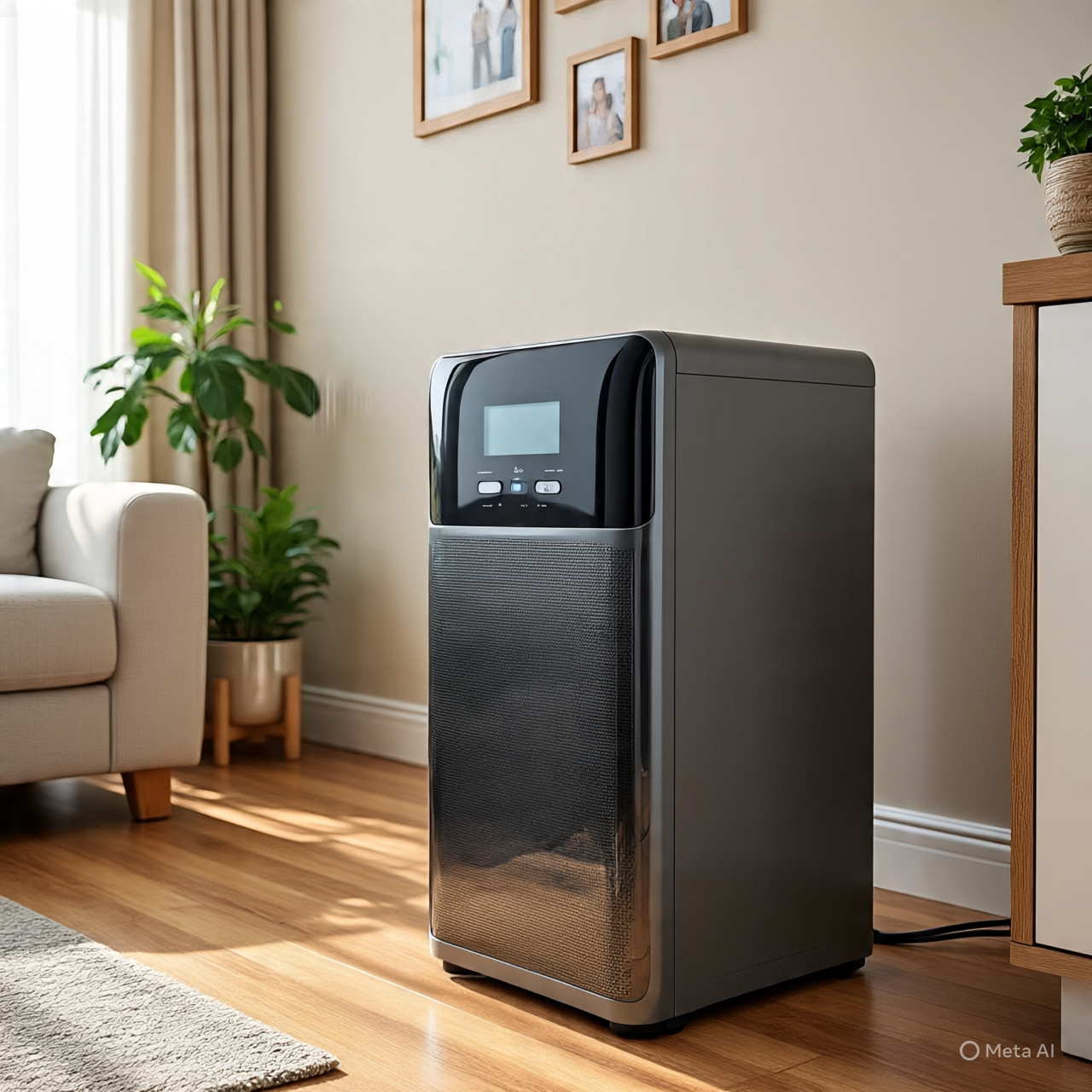Are you struggling with mold, humidity and condensation on your windows, or simply experiencing that unpleasant musty smell in your home? A dehumidifier can help you control excess moisture and protect your space from mold and mildew – but only if you use it correctly.
This guide covers everything you need to know to get the most out of your dehumidifier, from setup and placement to everyday use, maintenance, and troubleshooting.
How to Use a Dehumidifier: Step by Step
Step 1: Unbox and Inspect
![[MK] Draft: How to Use a Dehumidifier](https://www.market.com/wp-content/uploads/2025/08/-mk-draft-how-to-use-a-dehumidifier-1.png)
Before switching it on, remove all packaging and check for damage. Ensure the filter is correctly installed and the water tank is seated properly. Some models may have a transport lock that needs to be removed first.
Step 2: Choose the Right Spot
![[MK] Draft: How to Use a Dehumidifier](https://www.market.com/wp-content/uploads/2025/08/-mk-draft-how-to-use-a-dehumidifier-2.png)
Place your dehumidifier in the dampest area of the room – common trouble spots are near windows, in corners, or where laundry is drying. For best performance:
- Leave at least 6–12 inches of space around the unit.
- Avoid placing it directly against walls or furniture.
- Keep it away from heat sources like radiators or ovens.
Step 3: Plug It In and Power Up
![[MK] Draft: How to Use a Dehumidifier](https://www.market.com/wp-content/uploads/2025/08/-mk-draft-how-to-use-a-dehumidifier-3.png)
Connect the dehumidifier to a grounded plug socket. Avoid extension leads where possible, and make sure they sit level on the floor to prevent vibrations and water spills.
Step 4: Set the Desired Humidity
![[MK] Draft: How to Use a Dehumidifier](https://www.market.com/wp-content/uploads/2025/08/-mk-draft-how-to-use-a-dehumidifier-4.png)
Ideal indoor humidity is usually between 40% and 60%. If your model has a humidistat, set it to 50% to start – you can fine-tune it based on comfort and condensation levels.
Step 5: Select the Mode and Fan Speed
![[MK] Draft: How to Use a Dehumidifier](https://www.market.com/wp-content/uploads/2025/08/-mk-draft-how-to-use-a-dehumidifier-5.png)
Most models offer a few settings: continuous, auto, or laundry mode. Auto mode is generally best for everyday use. Select sleep mode or a lower fan speed for quieter operation at night.
Step 6: Monitor and Adjust
![[MK] Draft: How to Use a Dehumidifier](https://www.market.com/wp-content/uploads/2025/08/-mk-draft-how-to-use-a-dehumidifier-6.png)
Let it run for a few hours, then check the water tank. If it fills quickly, your space is quite humid. Adjust settings if needed, and move it to different areas to test coverage.
Tips on Using Dehumidifiers
1. Run It During Peak Humidity
Humidity tends to rise in the early morning and evening. These are ideal times to run your dehumidifier, especially in warmer months when outdoor air holds more moisture.
2. Use Doors and Windows Wisely
Close windows and internal doors while the unit’s running. This helps it target the room more effectively than pulling in outside air.
3. Use Laundry Mode if You’re Drying Laundry Indoors
Many modern dehumidifiers have a laundry setting – this runs the fan at full speed and extracts maximum moisture. Position it close to your drying rack to cut drying time by half.
4. Tailor Placement to the Room
- Bedrooms: Place at least 2–3 feet from the bed to reduce noise.
- Kitchens and Bathrooms: Run with ventilation fans off to avoid airflow conflict.
- Basements: Elevate slightly off the floor to improve airflow.
5. Adjust for the Season
If your home gets very cold in winter, use a model with an auto-defrost function; refrigerant units can ice up below 5°C. During wet spring or autumn months when humidity is high, consider using a continuous drainage hose for non-stop operation. In summer, prioritise energy-efficient settings. While you can adjust the settings based on the season, dehumidifiers are useful throughout the year.
6. Use a Smart Plug or Timer
Not all models have built-in timers. Use a smart plug or external timer switch to automate usage and reduce energy waste.
Dehumidifier Maintenance Tips
Empty the Water Tank Regularly
Depending on humidity levels, this might be daily or every few days. Some models beep or stop running when full. When using a continuous drainage hose, you don’t have to empty the tank manually.
Clean the Filter Monthly
A clogged filter restricts airflow and reduces performance. Rinse under cool water or vacuum gently, then let it dry fully before reinserting.
Check the Drain Hose (If Using One)
Ensure there are no blockages. If your unit allows continuous drainage, make sure the hose slopes downward and empties into a sink or floor drain.
Wipe the Unit Down
Dust can build up around vents. Use a damp cloth (no harsh cleaners) to keep the exterior clean and vents clear.
Understanding Dehumidifier Settings and Features
Humidity Level Setting (Humidistat)
This lets you set a target humidity. The dehumidifier will cycle on and off to maintain that level. Start at 50% and adjust based on comfort.
Fan Speeds
High speed removes moisture faster, but is louder. Low speed is best for quiet spaces like bedrooms or during the night.
Auto Mode
Auto mode uses the built-in sensor to adjust settings based on current humidity – set it and forget it.
Laundry/Dry Mode
This runs the fan at full speed and bypasses the humidistat to dry wet clothes or rooms after cleaning or leaks.
Timer Function
It lets you schedule when the unit turns on or off – ideal if you want it to run during the night. Some units have a 24-hour timer, while some units go up to a maximum set of hours.
Sleep/Night Mode
If your dehumidifier has a sleep mode, the unit usually decreases fan speed until it switches off.
Auto-Defrost Function
Prevents the internal components from freezing in colder environments. Essential for cold winters or unheated rooms.
Continuous Drainage Option
Some models let you attach a hose for automatic draining – ideal if you don’t want to empty the tank every day.
Wi-Fi/App Compatibility
Some of the newest models might include Wi-Fi compatibility and, therefore, can be operated via a smart app. This means you can operate the dehumidifier via your phone from anywhere.



